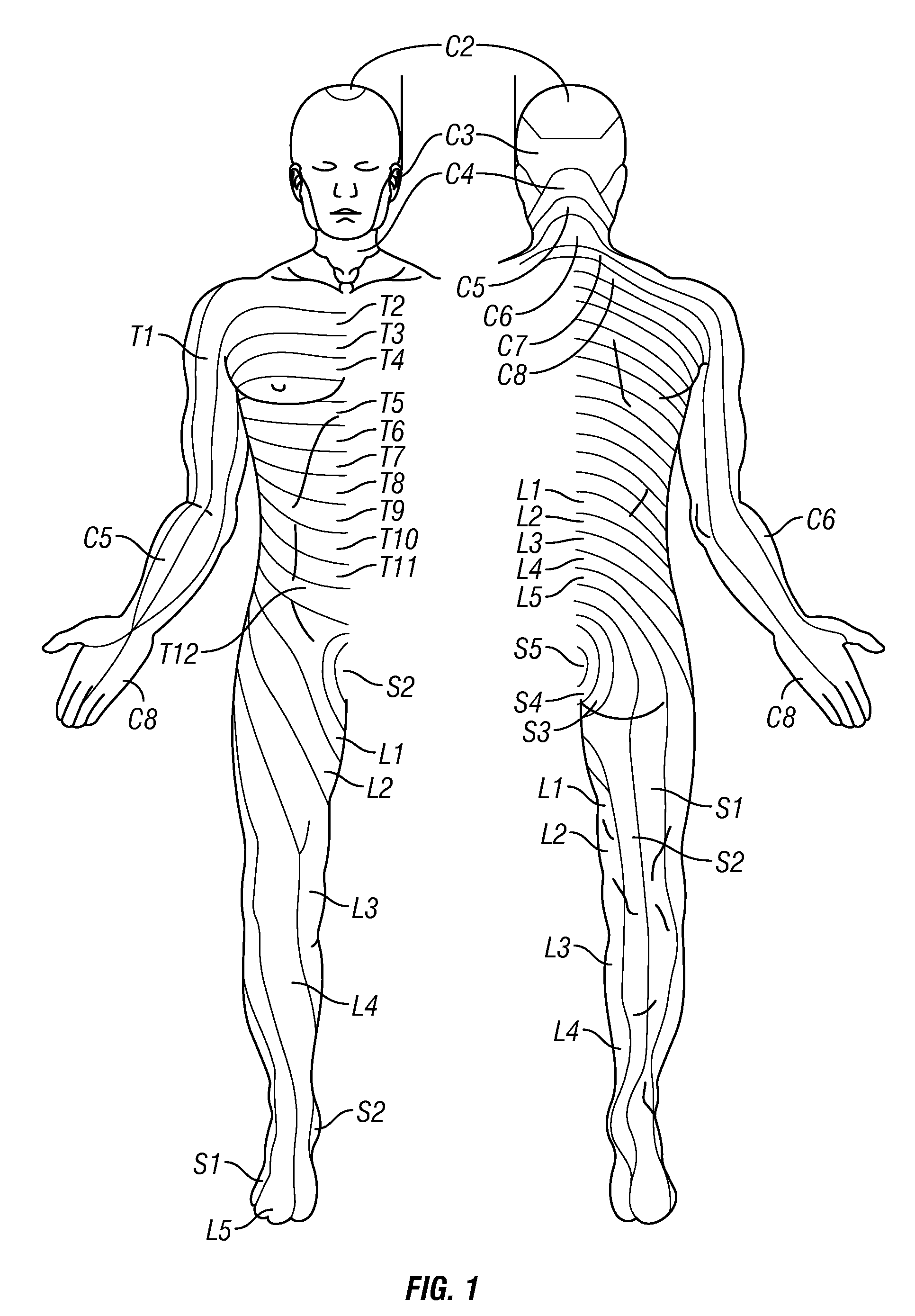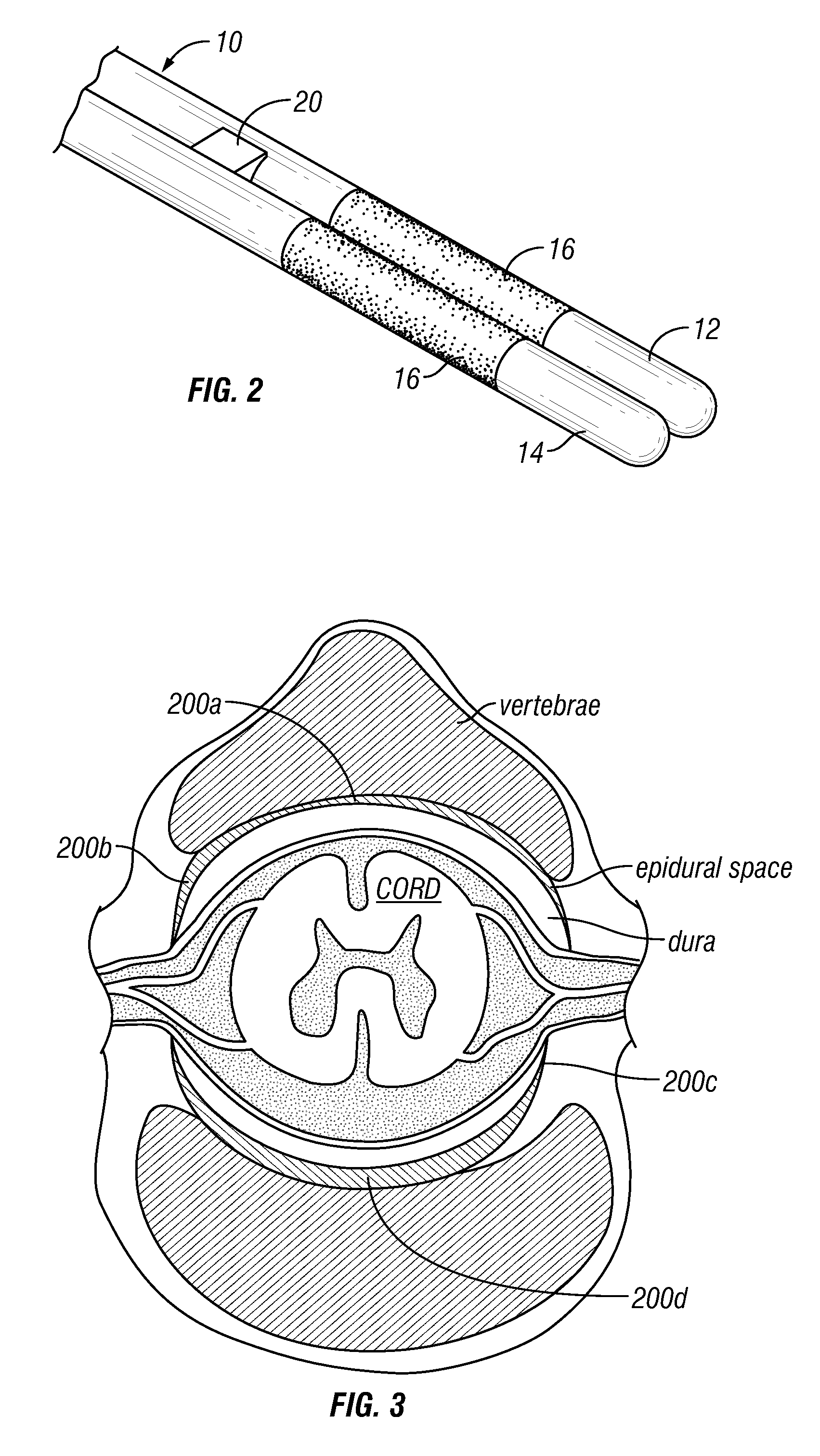Systems, Methods and Apparatus for Treating Cardiac Dysfunction with Neurostimulation
- Summary
- Abstract
- Description
- Claims
- Application Information
AI Technical Summary
Benefits of technology
Problems solved by technology
Method used
Image
Examples
##ic example 1
Prophetic Example 1
[0077]This trial is designed to provide preliminary evidence of the safety and efficacy of implanted neurostimulation as a therapy in chronic HF. Patients will preferably have relatively severe HF as depicted by NYHA functional class, LVEF (Left Ventricular Ejection Fraction), and their exercise capacity. All of the patients in the study will have a neurostimulation implant. The implant will be turned on in one group, will be turned off in others, and the study will include a randomized, cross-over design. Placebo control and exclusion control will be substantially similar to that described by Torre-Amione, G., et al., J. Am. Coll. Cardiol., Vol. 44 (6), pp. 1181-1186 (2004).
[0078]Methods
[0079]Patient selection. This is a single- or multi-center study with patients primarily drawn from HF (heart failure) clinics in and around the United States. Individuals ≧18 years of age with New York Heart Association (NYHA) (or equivalent) functional class III to IV, chronic H...
PUM
 Login to View More
Login to View More Abstract
Description
Claims
Application Information
 Login to View More
Login to View More - R&D
- Intellectual Property
- Life Sciences
- Materials
- Tech Scout
- Unparalleled Data Quality
- Higher Quality Content
- 60% Fewer Hallucinations
Browse by: Latest US Patents, China's latest patents, Technical Efficacy Thesaurus, Application Domain, Technology Topic, Popular Technical Reports.
© 2025 PatSnap. All rights reserved.Legal|Privacy policy|Modern Slavery Act Transparency Statement|Sitemap|About US| Contact US: help@patsnap.com



